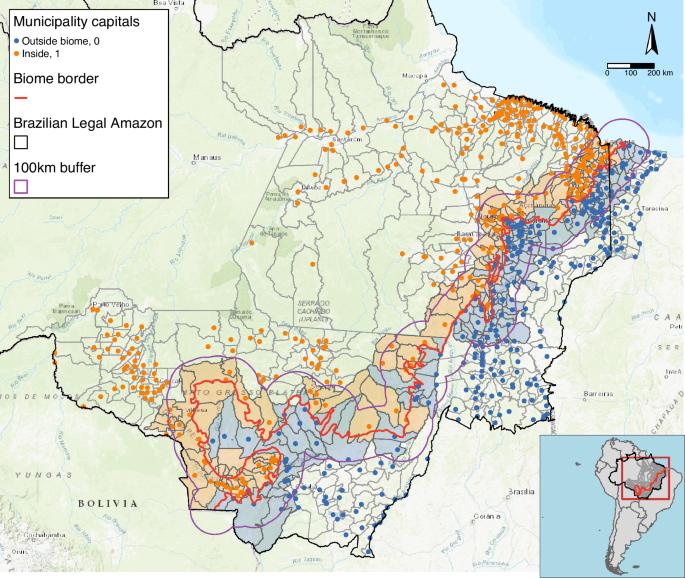减少巴西亚马逊森林砍伐对健康的益处
IF 8.1
1区 地球科学
Q1 ENVIRONMENTAL SCIENCES
引用次数: 0
摘要
将亚马逊地区的热带森林转用于农业和其他土地用途与健康风险有关,例如与森林火灾和农用化学品的使用造成的空气和水污染有关。2000 年代推出的几项保护政策旨在减少巴西亚马逊地区的森林砍伐。在此,我们利用这些政策的地区针对性差异,在亚马逊生物群落边界附近采用双重差分法测量保护政策实施对人类健康的外部影响。我们发现,森林砍伐压力的变化降低了森林火灾的发生率。因此,空气中的细颗粒物浓度--火灾烟雾对健康产生不良影响的主要媒介--也随之降低。这导致呼吸系统健康问题导致的住院率和死亡率下降,并为当地居民带来其他健康益处。森林保护政策减少了巴西亚马逊地区的森林砍伐,改善了当地的空气质量,降低了因呼吸道疾病导致的住院率和死亡率,并通过影响评估方法进行了量化。本文章由计算机程序翻译,如有差异,请以英文原文为准。

Health benefits of reduced deforestation in the Brazilian Amazon
The conversion of tropical forests in the Amazon region for agriculture and other land uses is associated with health risks linked, for example, to air and water pollution from forest fires and agrochemical use. Several conservation policies introduced in the 2000s aimed at reducing deforestation in the Brazilian Amazon. Here we exploit variations in the regional targeting of these policies to measure human health externalities of conservation policy enforcement using a double-difference approach at close distance to the Amazon biome border. We find that the change in deforestation pressure reduces forest fire incidence. As a consequence, fine particulate matter concentrations in the air—a main vector for adverse health effects of fire smoke—also decrease. This leads to a reduction in the hospitalization and death prevalence rate due to respiratory health problems and other health benefits for the local population. Forest conservation policies driving reduced deforestation of the Brazilian Amazon improves local air quality and decreases hospitalization and mortality rates due to respiratory diseases of the population, as quantified with impact evaluation methods
求助全文
通过发布文献求助,成功后即可免费获取论文全文。
去求助
来源期刊

Communications Earth & Environment
Earth and Planetary Sciences-General Earth and Planetary Sciences
CiteScore
8.60
自引率
2.50%
发文量
269
审稿时长
26 weeks
期刊介绍:
Communications Earth & Environment is an open access journal from Nature Portfolio publishing high-quality research, reviews and commentary in all areas of the Earth, environmental and planetary sciences. Research papers published by the journal represent significant advances that bring new insight to a specialized area in Earth science, planetary science or environmental science.
Communications Earth & Environment has a 2-year impact factor of 7.9 (2022 Journal Citation Reports®). Articles published in the journal in 2022 were downloaded 1,412,858 times. Median time from submission to the first editorial decision is 8 days.
 求助内容:
求助内容: 应助结果提醒方式:
应助结果提醒方式:


